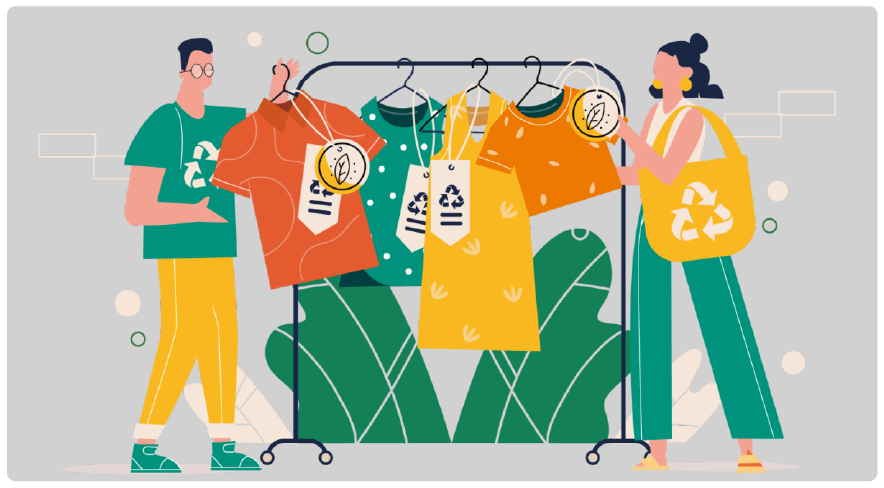The 2030 Agenda on the achievement of SDGs states that youth leadership will be a central part of the global vision in the ongoing decade. With 1.2 billion people in the 15-24 age group, we have a tremendous challenge and opportunity before us. And this realization is not lost on world leaders, who believe that the first ‘connected’ generation has the potential to be the first fully-sustainable generation. What we need is to build their active participation in the process.
Here’s one of the aspects of modern lifestyles that deserves mention: Fashion.
‘Fast Fashion’ is a new term making the rounds among the Gen Z. It is a model where clothing items are mass-produced rapidly, using cheap and toxic dyes, appealing to mainstream consumers with low prices but harming the environment in the process. And a closer look at the issue reveals drastic changes.
Over the last decade, the amount of clothes manufactured in the world has almost doubled. The life cycle of apparel is not long as people tend to grow out of their clothes or throw them away without much thought. Moreover, another problem is bubbling beneath the surface: exploitation of natural and human resources.
A single t-shirt needs about 2700 litres of water to manufacture. A single person drinks that quantity of water in 2.5 years! So, when we discard textiles frequently and in large numbers, we are creating a crippling issue for the planet. The fast fashion machinery is also known to engage in unfair labour practices and poor working conditions as the factories have to churn out new trends as quickly as possible.
To reduce such negative impacts, there is a growing need to introduce the young generation to conscious buying, recycling, upcycling, thrift shopping, etc. Read on for some beginner tips on integrating fashion sustainability into daily living.
Everyday Consciousness
The online world sometimes puts an unnatural emphasis on appearances and possessions. Instead of getting consumed by these materialistic influences, we should educate ourselves and those around us about making better choices. So, let’s cut a deal and strike a balance between doing good and looking good.
Here are some ways to be fashion sustainable:
- Buy second hand clothes and wear them with pride
- Don’t be conscious about repeating outfits on social occasions
- Style the same article of clothing differently
- Reinforce positive behaviors and lead others by example
“VSCO Girl” is another sweeping trend among teens. While many ridicule the consumerist bend of this meme, there’s also a teachable moment: An adolescent girl who is passionate about the environment and carries a Hydro Flask and reusable metal straws.
Home & Away
Annual wardrobe cleanups are great for at-home family activities. Hold a team huddle and get everyone to clear out their closets and donate old clothes. At least, this will keep the garments from ending up in landfills. You can take them to local NGOs or give them directly to people in need. And there you have a subtle way to transition from excess to moderation.
Another way to spend quality time is to nurture and encourage curiosity about sustainable living. Have thoughtful discussions on advancements in material technology like vegan leather and other eco-friendly fabrics. How feasible are these solutions? Can they go mainstream? You will only know if you try. You can actually find many environmentally friendly materials, from organic cotton and linen, to fruit leather and recycled fabrics.
Hemp is a fantastic option to negate the impact of harsh chemical dyes. It is naturally pest-resistant and requires a small amount of water and land for cultivation. It also returns most of the nutrients back to the soil. For home furnishings, floor tiling made from bamboo and organic cork and Lantana-wood furniture are some emerging natural and recyclable alternatives.
Driving Action Online & Offline
The internet has so much to offer: It can be useful in discovering ethical brands that follow sustainable labour and environmental practices while also giving you the chance to do something.
Pull out your favourite shirt, read its label, and find the brand’s website. Now, see where the brand comes from, who makes the clothes, etc. This way, you will be able to put a human entity behind the inanimate object you consume and support sustainable businesses. Share this new knowledge and positive feedback on social media. You will see how a hopeful spin on the conversation encourages others to join you in the cause!
Contributed by Arushi Sharma. This article was originally published in the Sustainability edition of ‘The Plus’ magazine.

